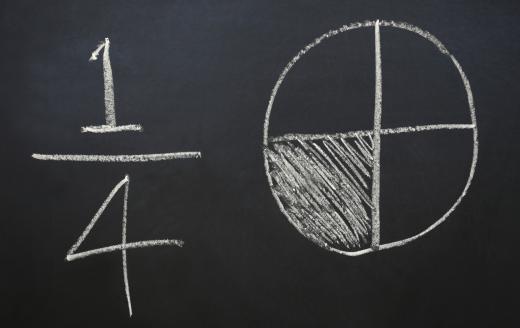A number line can be a line of any length that lists positive and sometimes negative numbers. Such lines are commonly used for young children learning arithmetic functions like addition and subtraction. They also come into use when children are taught about the “in between numbers” like fractions. Being able to plot fractions or decimals on a line is a helpful way of understanding the real size of a fraction and its comparative nature to other fractions.
In the standard horizontal number line, the zero is called the origin. Points to the right of the origin are positive numbers, and points to the left are negative numbers. Any number plotted on the line is called a coordinate. In early counting, children may simply learn how to plot coordinates on a line. The line usually is finished on each side with arrows, suggesting the line could go on essentially forever on both the left and the right side.

Sometimes, in early math lessons, the number line is not a line but a line segment or ray. The origin point of zero is the beginning of the line and signified by a dot instead of an arrow pointing to the negative number side. This is usually done to help young children with basic counting skills, since the concept of negative numbers is not introduced until children are in the 4th or 5th grade.
When negative numbers are taught, the number line can be a useful aid since one can simply count coordinates to get to the appropriate answer. For example, if a child is given the problem 5-7, he can count back seven spaces to arrive at the appropriate answer of -2. Similarly, the problem -3 + 4 can be solved by counting forward four spaces to arrive at the answer of +1. Note this will only work when the coordinates on the number line are whole numbers, or the child knows not to count coordinates that are not whole numbers.
Learning how to use a number line is excellent preparation for learning how to graph numbers. When students must learn how to graph coordinates, their familiarity with the horizontal number line makes it easier to understand vertical ones and the intersection of two numbers that are based on an (x, y) axis. Sometimes in preparation for learning how to find coordinates, students work for a short time with vertical instead of horizontal lines so their familiarity with finding numbers either from left to right and from bottom to top increases.
